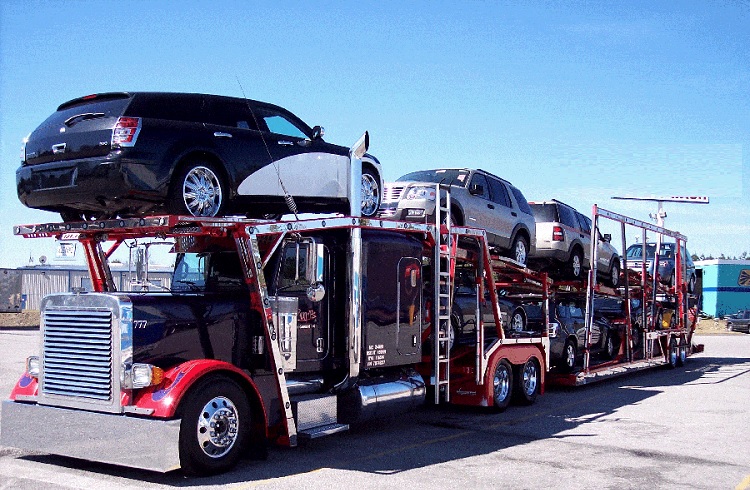Insurance is an important part of car shipping, and those who don’t have it sometimes find themselves in a tough spot. If you’re considering shipping your car to a destination across the country, consider what happens if it’s damaged during delivery. What if the driver gets into an accident? What if there’s another kind of damage? Here is where car shipping insurance comes to play. Some may not even know coverage or how to choose the right kind. Here’s all you need to know to get the protection you need.
What is Car Shipping Insurance?

Car shipping insurance is the type of coverage offered to protect your vehicle from damage during delivery. This can happen if you ship your car or even if it’s being transported somewhere in your vehicle. It is a form of auto insurance that covers the cost of transporting insurable goods. While coverage can vary depending on the carrier and type of goods being transported, some general elements are liability coverage and other personal injury protection (PIP) coverage, including medical care and income replacement. While these features may sound like a lot to pay for a very small risk, car shipping insurance can be a wise investment. Insurance rates can be very cheap (just a few dollars per $1000 in coverage), but the cost of damages for even a small accident is often substantial. Also, extra protection on your vehicle may be worth the investment, as many insurance companies will raise your rates if you have an at-fault accident.
What Does Car Shipping Insurance Cover?
Car shipping insurance has two main types of coverage: liability and physical damage coverage. As reported to the insurer, liability coverage covers you if your vehicle is at fault in a crash. For example, would the at-fault party pay the cost of your car hitting another driver who had to be transported to the hospital instead of being able to drive? Liability coverage ensures that you will be covered even if the wrong party is found responsible for an accident.
Physical damage coverage is just that: it covers physical damage to your car or other property, such as a broken windshield. While this coverage is not strictly necessary, it can provide more peace of mind if your car is damaged during delivery.
How Much Does Car Shipping Insurance Cost?

The cost of car shipping insurance varies depending on your coverage. While liability and physical damage coverage are fairly standard, there are many options for other features such as loss of use and extra accident protection. For example, even though physical damage coverage is standard on most policies, some companies specializing in auto shipping will include an extra option of loss of use coverage. This means that if your car is damaged, instead of being able to be driven away from the delivery location, it could be towed to a repair shop for repairs.
Loss of use insurance would cover the costs of this. Extra accident protection will protect you if there’s an additional accident between when the vehicle leaves your home and when it arrives at its destination. Some companies might charge a higher premium for this feature, while others may offer it as an option at no additional cost.
How to Buy Car Shipping Insurance
When purchasing car shipping insurance, several factors can affect how much it costs. The type of coverage that you choose will determine how much you’ll be paying, as will the carrier and even the base level of coverage you decide on. Here are some tips when purchasing car shipping insurance: Go with a company specializing in auto shipping (many auto transport firms will offer such coverage). When you need to ship a car to another state, a reputable company that is experienced with car shipping will be able to give you the most accurate quotes.
When to Buy Additional Car Shipping Insurance
While the cost of car shipping insurance can be fairly small, it is important to remember that your vehicle could get damaged during the moving process. The best time to buy additional insurance is before you ship your vehicle or deliver it. This way, you’ll have time to check the policy’s details and ensure you’re satisfied with them before making a large investment of money and risk.
What are the Auto Transport Insurance Requirements?
You don’t need specialized auto transport insurance when you ship a car. If you’re transporting your car from one state to another and it is insured, then no special auto transport insurance is needed. However, if you’re transporting a vehicle not covered by an existing auto policy, you will need proper carrier coverage or a third-party agency. An insurance agent to underwrite your auto shipping policy will require information about the commercial vehicle and its cargo. The federal government regulates those transporting vehicles and their cargo, including the carrier and auto transport insurance. It is strongly recommended that you obtain the contact information of the auto transport insurance carriers in your area before shipping your vehicle. An agent will be able to guide you through how to properly transport a car from state to state, answer any questions that you may have, and provide a quote for the required auto transport insurance. You can find an agent near you by going online or contacting your local department of motor vehicles (DMV).
Car shipping insurance tips
The average cost of car shipping insurance is quite low – especially compared to replacing a vehicle. The cost of the premium can vary depending on the coverage that you purchase, as well as other factors. Here are some tips for car shipping insurance:
- Request proof of insurance
Many insurance professionals will offer you quotes without proof of insurance. However, the lack of proof may lead to a denial of coverage. It is essential that you bring all documentation required by the carrier.
- Look for a specialist
Most carriers offer auto shipping insurance depending on your location and the value of your vehicle. United States carriers are usually more expensive, while overseas carriers can be much cheaper depending on where you wish to ship your vehicle.
- Choose the right carrier
Car carriers for auto shipping in Europe may be cheaper than in the US. You should carefully check if the carrier you choose offers specialist insurance, as this could help you receive a better price for your payment.
- Let everything be in writing
A carrier may help you receive better prices if you accept less coverage. However, the auto shipping insurance agreement must include any restrictions agreed to in writing.
- Make sure to get the appropriate coverage
A variety of carriers provide different levels of insurance coverage, allowing you to choose the right level of protection for the value of your vehicle. If your car is valued at more than $200,000, it will require an extra cover offered by a specialist US or overseas company.
- Perform an inspection
Suppose your vehicle has any bodywork or mechanical damage. In that case, it is a good idea to get an estimate on the value of your vehicle and include it in your auto shipping insurance agreement.
Conclusion
Car shipping exists because of the increasing need for people to obtain cars from one country to another and because of the shift in automobile manufacturing towards more lucrative markets. Your car is a valuable asset and should be protected accordingly, especially when driving it away from home. You must use an auto transport insurance company that understands the needs of their customers and will gladly provide you with information on how best to protect yourself.







